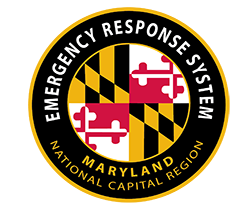
In 1995, the Washington, DC Metropolitan Area created the Metropolitan Medical Strike Team (MMST). The MMST program, which was funded by Congress as an outgrowth of the Department of Justice’s new domestic preparedness initiative, expanded to dozens of metropolitan areas in the US. Locally, MMST was a joint effort between Washington, DC; Arlington County, Virginia; and Prince George’s and Montgomery Counties in Maryland. The MMST was meant to provide hazardous materials and weapons of mass destruction response capability through the provision of specialized equipment and a multidisciplinary team of subject matter experts. It represented one of the earliest forms of coordinated terrorism response planning across first responder agencies.
In 1993, the World Trade Center was attacked with a vehicle-borne explosive. In 1995, the Alfred P. Murrah Federal Building Oklahoma City was bombed, and terrorists attacked the Tokyo subway with Sarin gas. To respond to these types of threats, the federal government developed the Metropolitan Medical Response System in 1997. The concept provided funding and planning framework to advance the all hazards approach to large scale incidents, with a particular emphasis on mass casualty response. The system included fire, emergency medical services, law enforcement, and public health. Both Montgomery and Prince George’s Counties in Maryland created local instances of MMRS in 2005. Over several years, in both counties, numerous multidisciplinary plans were developed to guide a cohesive response to large scale terrorist and mass casualty incidents. Nonetheless, most of these plans were jurisdiction-specific, and did not involve all relevant partners.
Building on the success of the MMRS model, while creating opportunities for improvement, the Maryland-National Capital Region Emergency Response System was formed in 2014. The mission and scope was adjusted to include the following:
- Unification of the entire Maryland-National Capital Region, including Montgomery and Prince George’s Counties, localities, and the state of Maryland, into a single cohesive body.
- Commitment to full capability building, including planning, organizing, equipping, training, exercising, and evaluating all target outcomes.
- Expansion to include emergency response to all extraordinary events, not just mass casualty and weapons of mass destruction. This included law enforcement special operations, healthcare surge, emergency management, operational coordination, and similar broader applications.
- Full-time staff dedicated to supporting the development, implementation, and refinement of multidisciplinary, multijurisdictional response capabilities.
- Better coordination and incorporation with neighboring systems, including the Northern Virginia Emergency Response System (NVERS) and the DC Emergency Response System (DCERS), to regionalize plans and capabilities.
- Include a broader array of response partners to include all facets of, and contributors to, the emergency response capacity of the subregion.
Since its inception, the Maryland-NCR Emergency Response System has become the single point of coordination for response partners across the subregion. The program has invested nearly $25 million in equipment, training, and exercises to create optimal emergency response to routine and large scale incidents in the Maryland-National Capital Region. Some of the capabilities developed over the years include:
- Tactical Emergency Casualty Care (TECC)
- Tactical Emergency Medical Services (TEMS)
- Public Access Bleeding Control (PATC)
- Critical Healthcare Facilities Evacuation
- Emergency Medical Services Mobile Data Devices
- Law Enforcement Special Operations
- Hospital Surge
- First Responder Medical Cache
- Emergency Medical Services Performance Monitoring Software
- Infectious Disease Sanitation Equipment
- Infectious Disease Protection Cache
- Joint Command Vehicle
- Interdisciplinary Incident Command, Unified Command
- Emergency Medical Services Surge Capacity
- Quick Response Police Vehicles
- High Threat Patient Evacuation Platforms
- Emergency Medical Services Personnel Ballistic Protection
- Bomb Squad Equipment
- Mass Casualty Incident Response Capacity Support
- Healthcare Information Exchange
- Unmanned Aerial Vehicles









